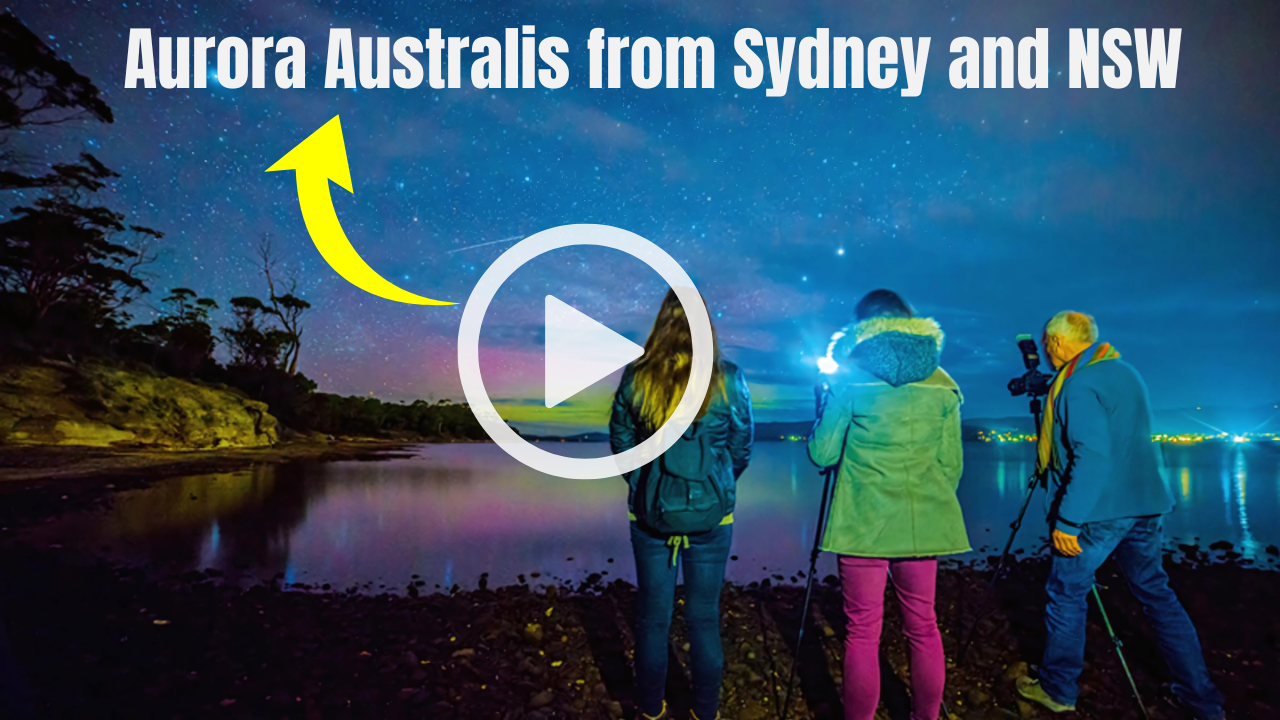Picture this: you’re standing under the vast Australian night sky, and suddenly, ethereal curtains of green, pink, and purple light begin dancing across the horizon. This isn’t just a dream – it’s the breathtaking reality of Aurora Australis, and surprisingly, it’s occasionally visible from parts of New South Wales, including areas not far from Sydney.
The Southern Lights have been capturing imaginations and camera lenses across Australia more frequently than many locals realize. While most people associate auroras with polar regions, recent geomagnetic activity has brought this celestial spectacle much closer to home than ever before.
Can you see the Aurora Australis from NSW?
Understanding the Magic Behind Aurora Australis
The science behind these mesmerizing light displays reads like something from a fantasy novel, yet it’s grounded in fascinating physics that occurs millions of kilometers above our heads.
The Cosmic Dance Begins
What is the Aurora Australis?
Every second, our Sun hurls electrically charged particles into space at mind-boggling speeds – we’re talking about velocities reaching 2,000 kilometers per second. This invisible river of particles, known as solar wind, travels across the vast emptiness of space until it encounters Earth’s protective magnetic shield.
Most of these cosmic travelers are deflected harmlessly away from our planet, but some manage to slip through the cracks in Earth’s magnetic field, particularly around the polar regions. When these particles collide with gases in our atmosphere – primarily oxygen and nitrogen – they create the spectacular light show we know as aurora.
Why “Australis” Makes It Special
In the Southern Hemisphere, this phenomenon takes on the name Aurora Australis, literally meaning “southern dawn.” Its northern counterpart, Aurora Borealis, has traditionally received more attention due to higher population densities in northern countries, but the southern version is equally spectacular and arguably more accessible to Australian observers.
The colors you’ll witness depend entirely on which atmospheric gases the solar particles encounter and at what altitude. Oxygen at higher altitudes produces red hues, while lower-altitude oxygen creates the more common green glow. Nitrogen contributes blues and purples to this cosmic palette.
NSW’s Surprising Aurora Viewing Potential
Breaking the Antarctic Myth
Contrary to popular belief, you don’t need to venture to Antarctica or even Tasmania to witness Aurora Australis. Recent years have seen increased solar activity, pushing the aurora oval – the ring-shaped zone where auroras typically occur – much further north than usual.
New South Wales has experienced several significant aurora events, with sightings reported as far north as the New England region near Tamworth and throughout the Riverina district. These weren’t just faint glimmers visible only to professional photographers with specialized equipment – many were bright enough to see with the naked eye.
Sydney’s Aurora Challenges and Opportunities
Sydney’s position presents both challenges and opportunities for aurora enthusiasts. While the harbor city sits relatively far north for consistent aurora viewing, exceptional geomagnetic storms can occasionally make the lights visible from Sydney’s southern suburbs and surrounding areas.
The primary challenge is light pollution. Sydney’s bright city lights create a luminous dome that can wash out all but the most intense aurora displays. However, this doesn’t mean Sydney residents are completely out of luck.
Prime Viewing Locations Across NSW
Regional NSW: The Aurora Sweet Spots
The Snowy Mountains Region
High altitude combined with minimal light pollution makes the Snowy Mountains one of NSW’s premier aurora viewing destinations. Towns like Jindabyne and Thredbo offer excellent southern horizons and crystal-clear skies during aurora events.
The South Coast
Coastal areas from Wollongong to Eden provide unobstructed southern views over the ocean. Beaches like Hyams Beach and Green Cape offer dark skies and wide-open horizons perfect for aurora photography.
The Central West
Places like Orange, Bathurst, and Mudgee combine reasonable accessibility from Sydney with significantly reduced light pollution. The higher elevation of many central west locations provides additional advantages.
Sydney Metropolitan Opportunities
Southern Suburbs and Royal National Park
Areas like Cronulla, Bundeena, and Audley offer the best chances within greater Sydney. The Royal National Park provides some of the darkest skies accessible to Sydney residents.
Western Sydney Elevated Areas
Locations like the Blue Mountains, particularly around Katoomba and Mount Victoria, offer both altitude and reduced light pollution compared to the city center.
Timing Your Aurora Adventure
Seasonal Patterns
Aurora activity follows predictable seasonal patterns related to Earth’s orbital position and magnetic field orientation. The equinoxes – roughly March and September – represent peak aurora seasons when geomagnetic conditions favor increased activity.
During these periods, the angle between Earth’s magnetic field and the solar wind creates optimal conditions for particle penetration into our atmosphere. However, exceptional geomagnetic storms can trigger aurora events throughout the year.
Daily Timing Considerations
The magic window for aurora viewing typically opens around 10 PM and extends until approximately 2 AM. This timing coincides with peak darkness and often with the strongest geomagnetic activity periods.
However, aurora displays can be unpredictable. Some events last mere minutes, while others persist for several hours. The most intense displays often occur in waves, with activity building to crescendos before subsiding and potentially returning.
Preparation and Photography Tips
Essential Equipment
While aurora can be visible to the naked eye during strong events, certain equipment enhances the experience significantly.
Camera Setup
A DSLR or mirrorless camera with manual controls is ideal, but even smartphone cameras with night modes can capture impressive aurora images. A sturdy tripod is absolutely essential for the long exposures required.
Recommended Settings
Start with ISO 1600-3200, aperture f/2.8 or wider, and exposure times between 10-30 seconds. These settings may need adjustment based on aurora intensity and local conditions.
Weather and Atmospheric Considerations
Clear skies are obviously essential, but other atmospheric factors can significantly impact viewing success. High humidity can create haze that obscures faint aurora, while temperature inversions can enhance visibility.
Wind patterns also matter. Still nights often provide better viewing conditions than windy evenings, as atmospheric stability can affect how clearly the aurora appears.
Staying Informed About Aurora Activity
Official Monitoring Resources
The Australian Bureau of Meteorology operates a Space Weather Services division that issues aurora watches and warnings. Their website provides real-time data on geomagnetic conditions and aurora visibility predictions.
NASA and various international space weather agencies also provide valuable forecasting information. The key metric to watch is the KP index – values above 7 often indicate aurora visibility potential for NSW.
Community Resources
Social media groups and astronomy clubs across NSW share real-time aurora sightings and predictions. These community resources often provide location-specific advice and photography tips from experienced aurora watchers.
Local photography groups frequently organize aurora watching expeditions during predicted events, offering newcomers the chance to learn from experienced observers.
The Growing Frequency of NSW Aurora Events
Solar Cycle Influence
We’re currently experiencing increased solar activity as we approach solar maximum – the peak of the 11-year solar cycle. This increased activity translates to more frequent and intense geomagnetic storms, pushing aurora displays further from the poles.
Climate scientists predict this elevated activity will continue for several more years, potentially offering NSW residents unprecedented opportunities to witness Aurora Australis from their home state.
Future Predictions
Space weather experts suggest that the current solar cycle could produce some of the most significant aurora events visible from NSW in decades. This makes now an excellent time for aspiring aurora watchers to develop their skills and prepare for potentially spectacular displays.
Frequently Asked Questions
Q: Can I see aurora from central Sydney?
A: Only during extremely strong geomagnetic storms, and then only faintly due to light pollution.
Q: What’s the best time of year for NSW aurora viewing?
A: March and September offer the highest probability, though strong events can occur year-round.
Q: Do I need special equipment to see aurora?
A: No special equipment is required for viewing, though cameras help capture the experience.
The magic of Aurora Australis lies not just in its visual splendor, but in its ability to connect us with the vast cosmic forces that shape our planet. For NSW residents willing to venture away from city lights and stay informed about space weather conditions, the Southern Lights offer an accessible gateway to one of nature’s most extraordinary phenomena. Whether you’re a seasoned astrophotographer or simply someone who appreciates natural beauty, the growing frequency of aurora events in NSW presents an unprecedented opportunity to witness this celestial ballet from your own backyard.

